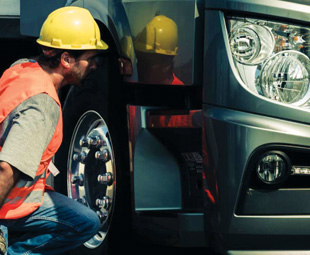The right repair

How can one ensure that vehicles, which have been damaged in accidents, are repaired using quality replacement parts? GAVIN MYERS finds out from the South African Motor Body Repairers Association (Sambra)
Edwin Martin, national director at Sambra, and Randall Langenhoven, regional manager at Sambra Western Cape, are straightforward with their assessment of some aftermarket replacement parts in circulation.
The parts could be manufactured from non-virgin materials and have general form and fitment issues, where panels don’t align properly or have the correct mounting points. This results in repairers having to make certain adjustments to manipulate these panels to fit the vehicle.
“The parts may look similar, but differ greatly in their fitment and function,” Martin says.
This is most important when safety-critical components are in question – such as light clusters.
“For example, the mechanisms and reflectors in headlamps may not focus the light in exactly the same way as the original part, while indicator or brake lamps may last for only six months before they fade and discolour. If these lights are not visible, accidents can result,” he adds.
The reasons for consumers choosing to fit aftermarket parts is, naturally, the cost difference between these and original parts. Martin advises that this practice should be strictly avoided when safety-critical components (including lights and mechanical components) are required.
“However, if the consumer is prepared to suffer a reduced market value on the vehicle, they are free to choose aftermarket cosmetic parts,” he says with trepidation. “The important thing is to determine the origin of the part.”
“It’s always been known that certain parts from certain suppliers are of better or worse quality. If the consumer has knowledge about the origin of the parts they can make an assumption about the quality, but most of the time it’s the insurer that tells the repairer where to obtain the parts. That’s a challenge we have in the body repair industry,” says Langenhoven.
Martin elaborates: “For vehicles within warranty, the original equipment manufacturer (OEM) specifies that only original parts can be used. The challenge is with vehicles out of warranty, as insurers have a tendency to request aftermarket parts whenever possible.”
Martin advises that, under such circumstances, one cannot hold the repairer responsible if the instruction comes from the insurance company that is covering the cost of the repairs. “As the insured owner of the vehicle, however, you can take it up with the insurance company and insist on the fitment of original parts.
“Although insurance companies tend to profess that all these parts are of equal quality, this is seldom actually the case,” Martin adds.
What about a good old-fashioned panel beating repair, as opposed to replacing the damaged parts? This still exists, but is often a matter of economics.
“If the damage is of such a nature that it can be safely and adequately repaired, the instruction would come from the insurer to do so. If the part is not locally available, however, the decision to repair could be taken, so as not to leave the client without a vehicle for an extended period of time,” Langenhoven says.
For peace of mind, vehicle owners can ensure their repairer is accredited by Sambra – which means they subscribe to a code of ethics and undergo an annual grading to ensure they meet the necessary requirements to affect a safe and good repair. Should the owner have any concerns, he or she can contact their respective Sambra regional manager.
Published by
Focus on Transport
focusmagsa




